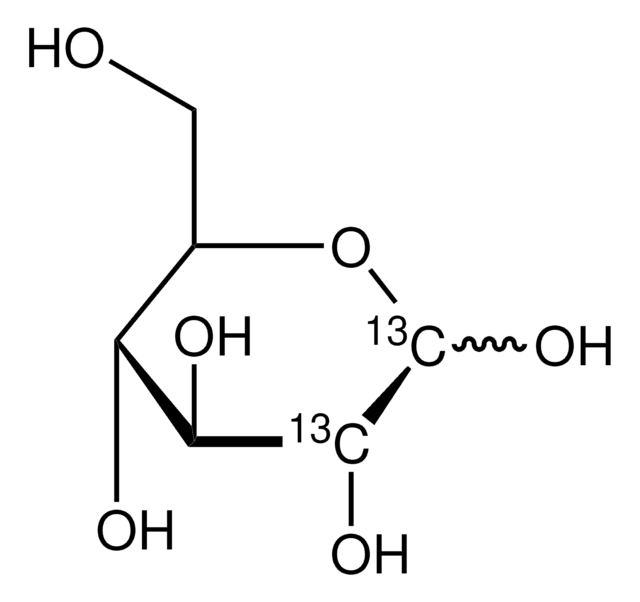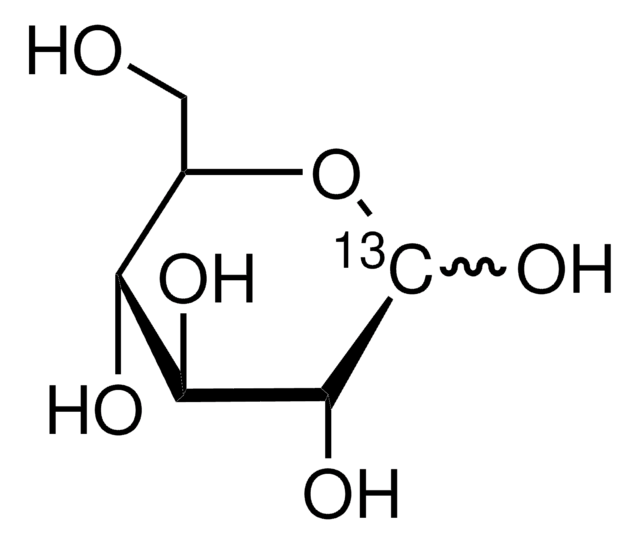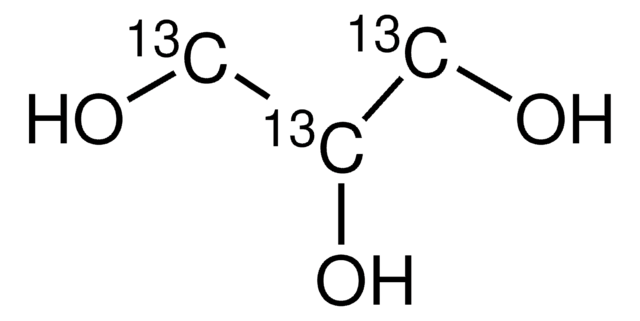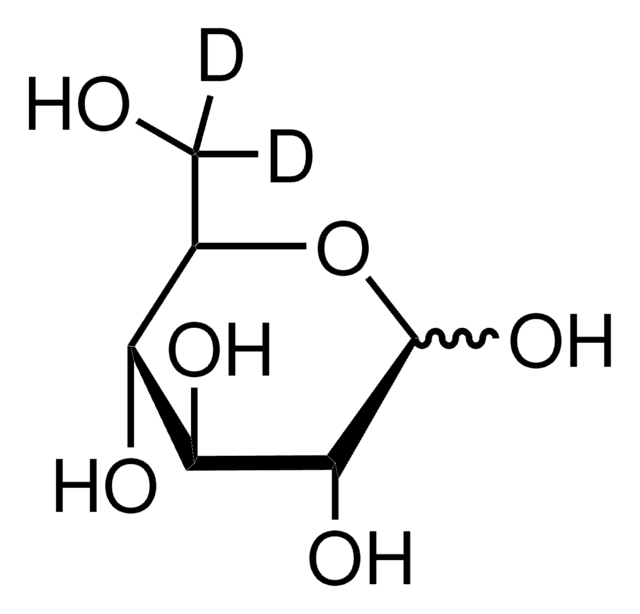453196
D-Glucose-1,6-13C2
≥99 atom % 13C, ≥99% (CP)
Sinonimo/i:
Labeled Glucose, Dextrose-1,6-13C2
About This Item
Prodotti consigliati
Purezza isotopica
≥99 atom % 13C
Saggio
≥99% (CP)
Forma fisica
powder
Attività ottica
[α]25/D +52.0°, c = 2 in H2O (trace NH4OH)
Punto di fusione
150-152 °C
Spostamento di massa
M+2
Stringa SMILE
O[13CH2][C@@H]1O[13CH2][C@@H](O)[C@H](O)[C@H]1O.O
InChI
1S/C6H12O6/c7-1-3(9)5(11)6(12)4(10)2-8/h1,3-6,8-12H,2H2/t3-,4+,5+,6+/m0/s1/i1+1,2+1
GZCGUPFRVQAUEE-OFAMVBKFSA-N
Confezionamento
Codice della classe di stoccaggio
11 - Combustible Solids
Classe di pericolosità dell'acqua (WGK)
WGK 1
Punto d’infiammabilità (°F)
Not applicable
Punto d’infiammabilità (°C)
Not applicable
Dispositivi di protezione individuale
Eyeshields, Gloves, type N95 (US)
Scegli una delle versioni più recenti:
Possiedi già questo prodotto?
I documenti relativi ai prodotti acquistati recentemente sono disponibili nell’Archivio dei documenti.
I clienti hanno visto anche
Articoli
Isotopic Labeling for NMR Spectroscopy of Biological Solids;
Learn about monosaccharide biosynthesis and the metabolism of monosaccharides. A unit of a carbohydrate and the simplest form of a sugar, a monosaccharide cannot be hydrolyzed into a simpler compound.
Review the 10 steps of glycolysis in the Embden-Meyerhof-Parnas glycolytic pathway. Easily compare reaction stages and buy the enzymes for your life science research.
Dynamic Nuclear Polarization (DNP) is a phenomenon by which high spin polarization, typically derived from a bath of free radical electrons, is transferred to a nuclear spin bath, enhancing the difference between the nuclear energy levels and thereby producing dramatically enhanced NMR signals for detection.
Il team dei nostri ricercatori vanta grande esperienza in tutte le aree della ricerca quali Life Science, scienza dei materiali, sintesi chimica, cromatografia, discipline analitiche, ecc..
Contatta l'Assistenza Tecnica.













